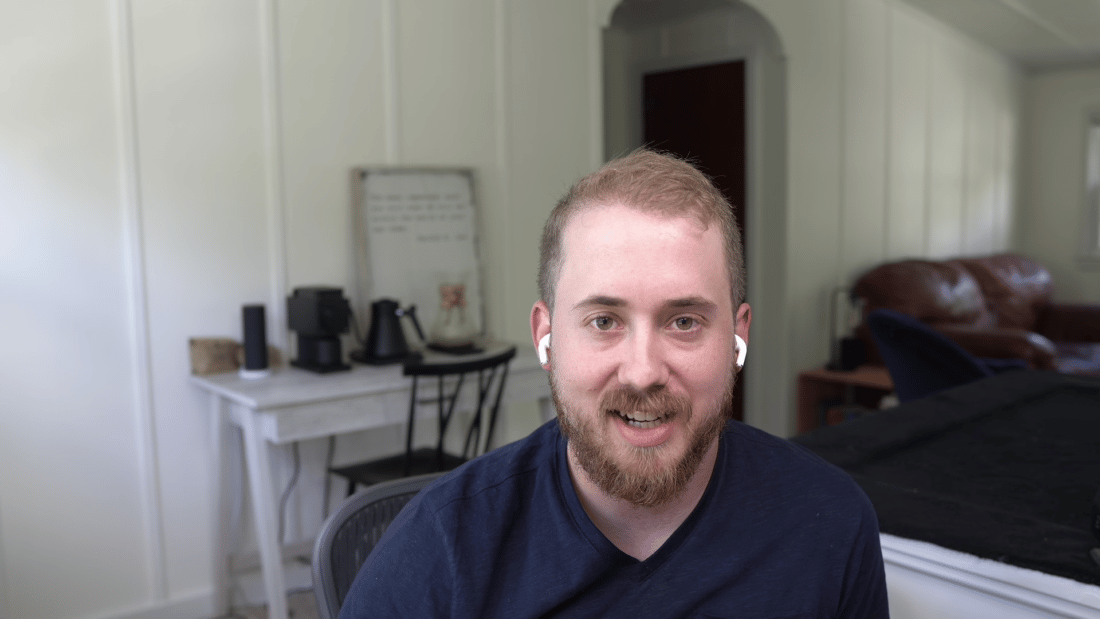Who are we trying to meet and where do we meet them? It’s more than, we only meet our customers at one time in one place with one strategy.
PeterJohn Hunt is Chief Technology Officer of Useful Group, an advanced WordPress agency and think tank with a team of strategists and creatives partnering with businesses, nonprofits, ministries, authors and more. Hunt is a self-taught designer and developer who excels in WordPress and web development and design.
In this episode of Velocitize Talks, PeterJohn Hunt shares his thoughts on creative problem solving, WordPress, headless and e-commerce.
Custom Creative (3:04)
How we really serve the marketer is to take really good work product, like awesome design and a great user experience, and then turn it into something that’s not just a one-and-done utility but a living tool.
Every client demands separate and distinct custom creative solutions depending on their type of business and digital needs. For example, one of Useful Group’s clients was Clockwork, a tool designed to help small-business owners save time on bookkeeping. However, Clockwork was just starting out and lacked any type of comprehensive digital strategy, including branding, a website, design, and overall messaging.
Useful Group essentially created Clockwork’s entire brand strategy and core identity, as well as designed and developed the company’s logo for use across all digital properties.
Hunt stresses the fact that Useful Group tries not to approach projects with any assumptions. Instead, they want to focus on building tools that allow marketers to do what they do well.
Headless Expectations (4:26)
How does technology solve real-world problems?
Headless architecture is one major solution that has made advanced technologies easier. According to an international survey conducted by WP Engine, The State of Headless: A Global Research Report, 92% of respondents said that headless makes it easier for organizations to deliver a consistent and dynamic customer experience. In addition, 64% of enterprise organizations are already using a headless approach, up from just 25% in 2019.
“We’ve seen more of a bent towards things like headless,” Hunt says. “We’re also pushing forward a lot of the architectures around that, whether that be componentized or just modern development strategies and auto deployment.
“How do we simplify things down into a way that really meets the customers, whoever we’re trying to hit, with these channels effectively?”
Crafting the Story (5:41)
It’s solving a real-world problem for the marketer. How do we really bring those together in a unique way and create something beautiful?
It’s difficult to create a truly engaging customer experience without bringing content and development together in a seamless way. Content creators need to have more automony, especially when mapping out an omnichannel strategy.
One of Useful Group’s clients, Sassy Sparrow, is a small, family-owned business based out of Forrest, IL. It sells rustic leather bags and is run by five sisters. Once their e-commerce sales started growing, they looked to Useful Group for updated branding that would convey their “vintage aesthetic and charm.” The agency built and redesigned the website with fresh content and unique storytelling that would capture the spirit behind the bags.
WordPress & WooCommerce (7:02)
It’s awesome to see this manifestation of looking at not only what’s possible but actually excelling at serving the WordPress enterprise suites.
Useful Group is an advanced WordPress agency and as a result they work with WooCommerce, an e-commerce plugin used by 94% of WordPress online stores. WooCommerce brings two sizable advantages to the table, especially for smaller businesses: page speed and scalability.
“There’s so much content about how WordPress can help the startup or the initial company,” Hunt says, “but for me to be able to see that brought into big business architecture with modern technologies and strategies is incredibly joyful.”
Channel Surfing (9:33)
How do we know our customer more and build a narrative that really resonates? How do we even know who our community is?
Telling a story is one thing; getting people to read it/hear it/watch it is another. Adopting an omnichannel strategy can deliver brand messaging through a host of different communications and channels—whether that’s social media, a podcast, email or influencers—in order to reach and also engage your target audience across platforms.
For example, another Useful Group client, the Christian Standard Bible, already had a strong media presence in traditional outlets but the agency wanted to make sure their message was more widely disseminated. They created “Living and Effective,” a custom-branded podcast with Christianity Today magazine. In other words, promoting Christian Standard’s mission via podcast made the most sense.
“It’s especially important to be aware of that holistic nature of, what is our story and how are we telling it?” Hunt says. “How is it consistent and is it meeting people successfully?”
What Inspires PeterJohn Hunt?
The opportunity to build things that really help people, push people forward, and serve them.
To learn more about Useful Group, visit their website and follow them on LinkedIn, Facebook and Twitter at @usefulgroup. To keep up with PeterJohn Hunt, follow him on LinkedIn.
